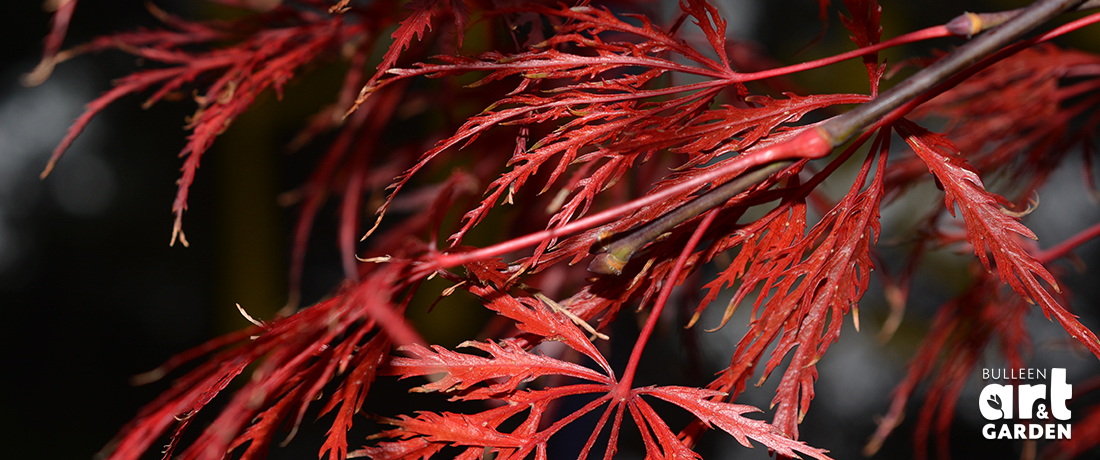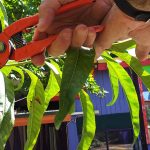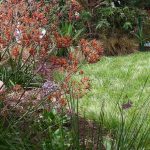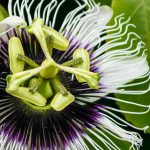
Many ornamental plants will need some form of pruning at some time. Pruning out dead, diseased and damaged growth, encouraging healthy growth, increasing the density, reducing the size of the plant, prolonging the flowering season and promoting bigger blooms are some reasons why pruning is used in the cultivation of plants.
As long as pruning cuts are made in the correct position and cleanly, the plant will heal. Using special paint to seal the cuts is not usually necessary if the cuts are made correctly with clean pruning equipment. Always use pruning equipment appropriate to the size of the branches you will cut. The most commonly used pruning tools are secateurs, loppers and pruning saws. When tying up stems, use soft flexible ties and allow for some movement of the stem. Remember to regularly check and remove ties, as these cause significant damage to plants if they are left on unchecked.
Position of the pruning cut
When making pruning cuts on smaller stems and branches, the position of the cut is just above a node. A node is where a bud, leaf or stem emerges from a branch. The internode is the space along the branch between the nodes. If the cut is made too far into the internode, then the branch usually dies back to the node. This area of die back is a potential entry point for disease.
Note: The angle of the cut is not as important as getting the position right. Ideally, the cut should angle slightly away from the bud so that water is directed away from the bud. Do not cut on a sharp angle as this makes a large wound and may damage the bud.
When pruning main branches, the cut should be positioned so that the branch – bark ridge and the collar are not damaged. The branch – bark ridge can be seen on most trees. It is the ridge of bark on the top side of the attachment point where the branch is attached to the trunk. The collar is harder to see, but it is the swollen area underneath the attachment point of the branch to the trunk. Even if you cannot see it, the collar is still there and should not be damaged. The pruning cut should be made just outside this area.
If you leave a large stub, then this usually dies back and is an entry point for disease. Undercutting a branch before cutting is recommended, particularly on larger branches, as this prevent the bark tearing and damaging the branch collar. Avoid damaging the bark, as this can cause significant damage to the tree and provides a potential entry point for disease.
Ornamental Trees
Most ornamental trees will require pruning at some stage, even if it is just removing dead, damaged or diseased branches. The way to position the pruning cut has been discussed above. Try to prune branches back to a branch union. This is particularly important when cutting trees back from paths and fences. Your first rule should be STOP and THINK before cutting anything.
Never remove more than one third of the canopy at any one time, and it is best to prune trees over a period of time rather than all in one go. Safety is also a concern particularly with large trees and branches and larger jobs are best left to an arboriculture expert. As for using a chainsaw, if you are not experienced, don’t.
Many ornamental trees are grown for their habit (shape). Poor pruning can completely destroy the natural growth habit of the tree, so it is best to take the time to consider a way to prune to maintain the habit of the tree.
Pruning Back
Select the branches that are causing the problem, then select the outermost branch. Prune this branch back to a branch union. Then stand back and have a look. If this has fixed the problem then no further pruning is required. Otherwise select the next outermost branch and shorten to a branch union, until the branches are no longer in the way.
Reducing the height
Reducing the height of the canopy may be done in a similar way to pruning back. Prune back to a branch union instead of lopping off branches at a designated height. When reducing the height of trees that naturally have a tall slender shape, (such as a pencil pine), the main leader will need to be shortened. Branching below the cut will thicken the top of the tree.
Reducing the size
On large mature trees, no more than one third of the canopy should be removed at one time, and reducing the canopy is best carried out over several years. Again, consider the habit of the tree and try to maintain this.
Thinning
Some older trees form a dense canopy under which it is almost impossible to grow anything. The canopy may be selectively thinned to allow more light through to the plants underneath. Thinning in a way that still maintains the shape of the canopy can be difficult, and this technique is best left to an arboriculturist.
Pruning the canopy up
This is a very common practice, as access underneath trees is often needed. Select the branch or branches that need to be removed, and prune back to the trunk remembering the correct way to position the cut. If several branches need to be removed, it is best to do this gradually over time allowing the tree to grow in between.






